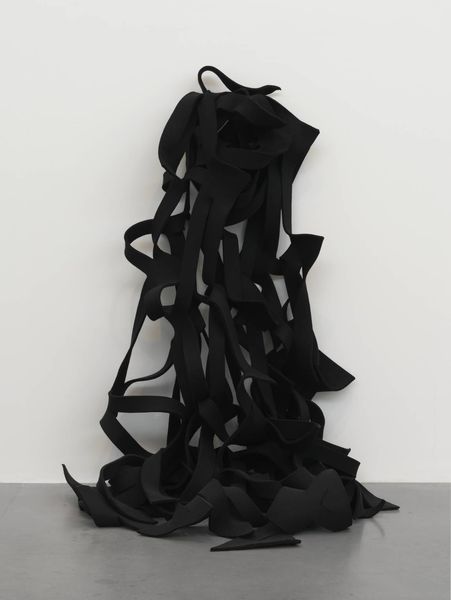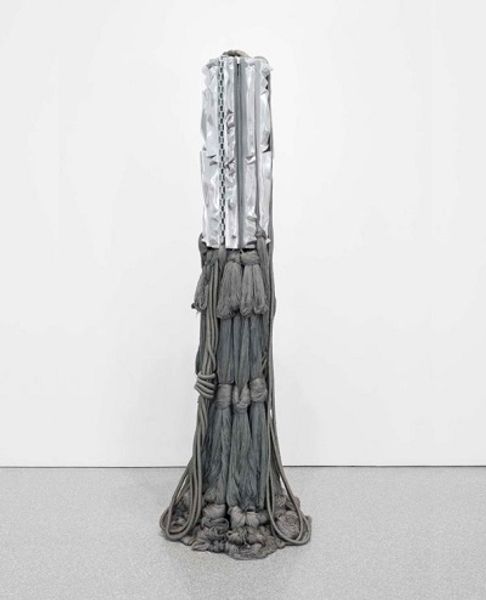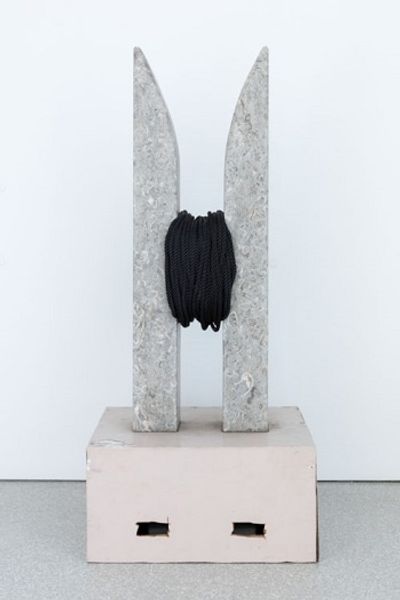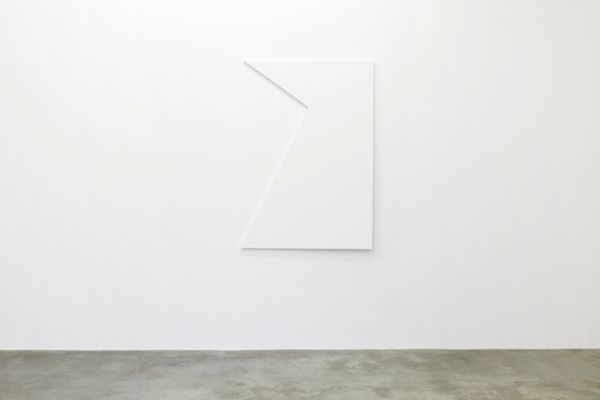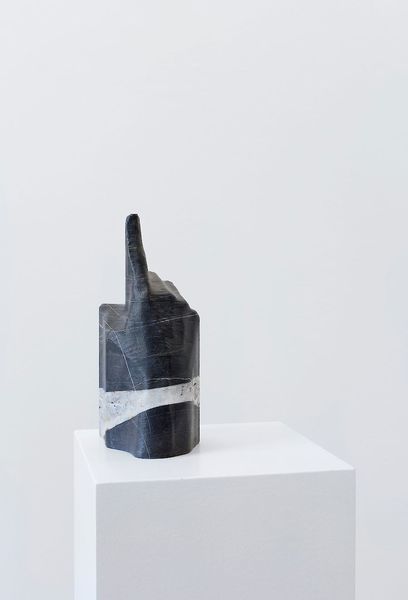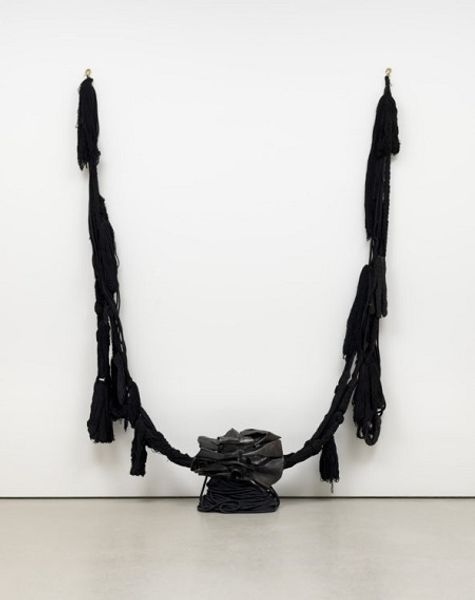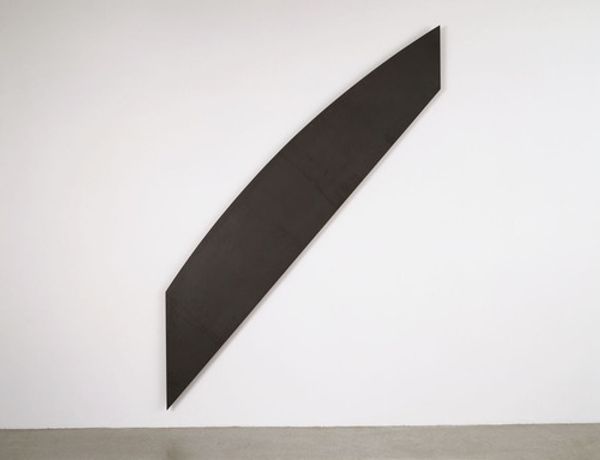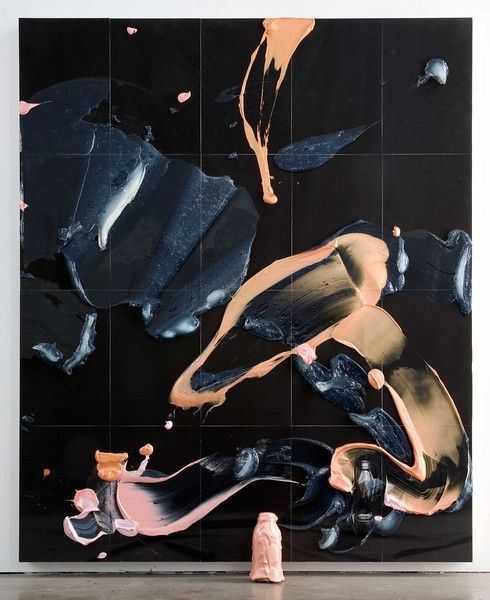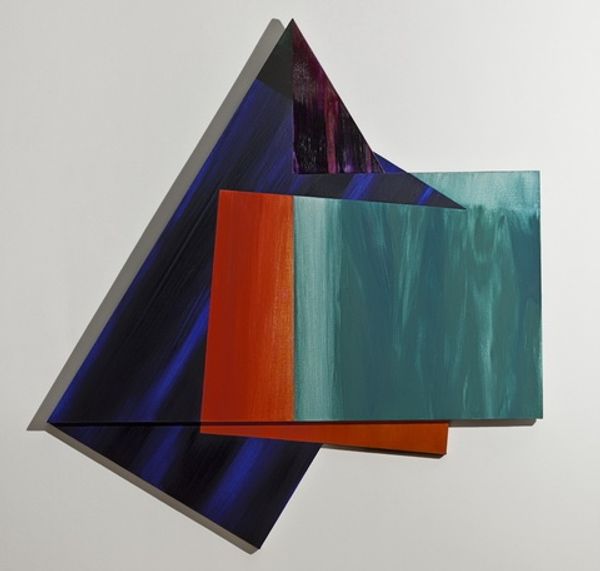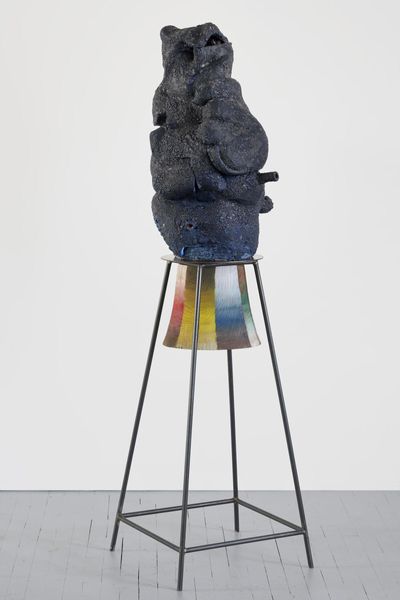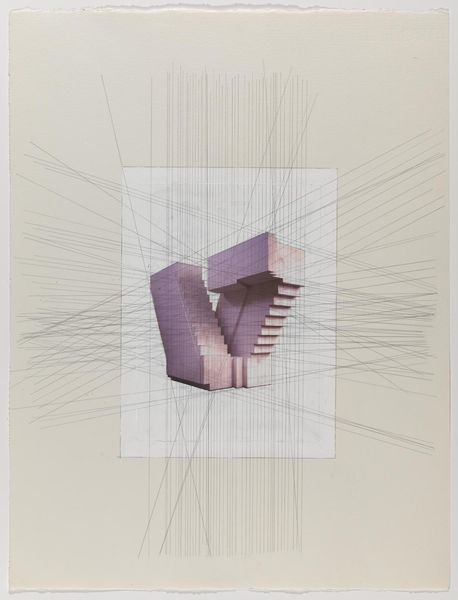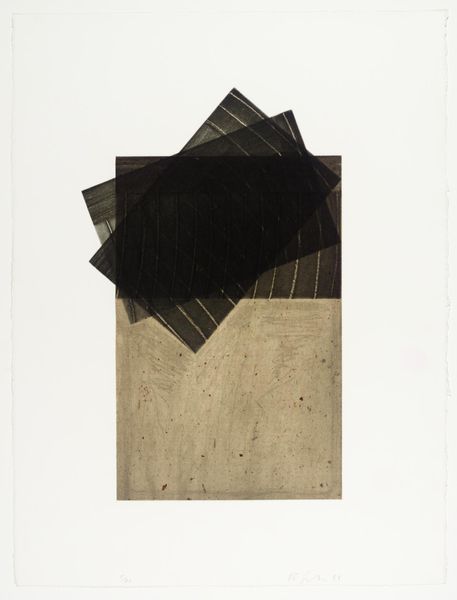
mixed-media, sculpture, installation-art
#
mixed-media
#
contemporary
#
sculptural image
#
form
#
abstract form
#
sculpture
#
white focal point
#
installation-art
#
abstraction
Copyright: Danh Vō,Fair Use
Editor: We are looking at "Lot 20. Two Kennedy Administration Cabinet Room Chairs," a 2013 mixed-media sculpture by Danh Vō. At first glance, it appears almost like discarded remnants, a deconstructed object. How do you interpret this work, especially considering its title? Curator: It’s more than just remnants; it's a loaded reconstruction. Vō often deals with themes of identity, history, and power. These re-appropriated objects, referencing the Kennedy Administration, invite us to consider the narratives embedded within these historical remnants and how they're reshaped by contemporary forces, global economies, and power structures. How does the apparent disarray challenge your understanding of historical artifacts? Editor: I guess I assumed they would have some kind of reverential treatment because of their historical significance. The abstraction sort of strips that away. Is he questioning the idealization of the Kennedy era? Curator: Precisely. Vō deconstructs that idealization. Think about what "Kennedy" represents – a certain vision of American power, prosperity, and cultural dominance. By fragmenting and reassembling these objects, Vō critiques that narrative, pointing towards the inherent contradictions and erasures within it, questioning whose histories are valorized and at what cost. He pushes us to consider the socio-political undercurrents that ripple beneath seemingly stable historical narratives. Does that shifted context change how you perceive the materials themselves? Editor: Absolutely, I now see the disruption as an intentional commentary on how history is constructed and who gets to do the constructing. It’s not just about the materials; it’s about what they represent and how Vō subverts that. Curator: And how those power structures continue to influence the present. Understanding this piece forces us to engage critically with historical legacies and our own assumptions about power and representation. Editor: It certainly provides a powerful lens through which to view both the past and the present. Thank you for providing the social context around these materials!
Comments
No comments
Be the first to comment and join the conversation on the ultimate creative platform.
